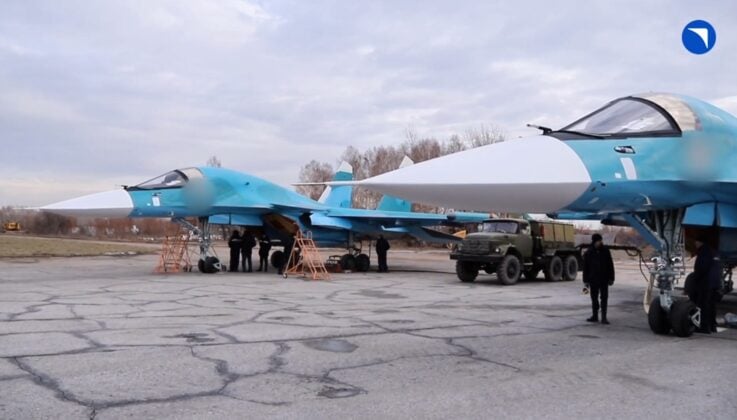
Russia has announced the delivery of a new batch of Su-34 fighter-bombers to its armed forces, according to a statement from the United Aircraft Corporation (UAC).
The aircraft are intended to support ongoing combat operations and replace losses sustained during Russia’s war in Ukraine, where the platform has been heavily used in strike missions.
According to UAC, the Su-34 is designed to engage ground, surface and aerial targets, including infrastructure protected by air defense systems at long distances from home airfields. The aircraft can also conduct reconnaissance missions, supporting front-line operations where Russia continues to rely on airpower to strike Ukrainian positions and supply routes.
In a statement carried by the corporation, the company emphasized the aircraft’s role within Russia’s tactical aviation forces. “The Su-34 has become one of the symbols of the strike capability of Russian front-line aviation. The aircraft is notable for its reliability, range, and a universal range of weapons — from bombs to precision-guided missiles,” the statement said. UAC added that the aircraft is capable of both defensive air combat and precision strikes against hardened targets.
Rostec, the state industrial conglomerate that oversees UAC, echoed that assessment and underscored the platform’s continued relevance, particularly as Russia adapts its aviation tactics in Ukraine. Russian military pilots quoted in state media described the Su-34 as widely used in operations, noting its ability to employ new munitions while maintaining survivability during combat flight profiles.
“A well-developed aviation system with a good reserve for the future, it has a wide range of weapons with the ability to employ advanced strike systems,” one Russian Aerospace Forces pilot said.
The Su-34, a twin-engine strike aircraft derived from the Su-27 family, has been used to carry guided bombs and long-range air-to-surface missiles. In Ukraine, the aircraft has been employed in stand-off strike roles, where Russian forces have attempted to reduce aircraft exposure to Ukrainian air defenses by launching munitions from outside Ukrainian-controlled airspace. However, the system has also demonstrated vulnerabilities when flying closer to the front.
Independent analysts tracking visually confirmed combat losses have documented a steady attrition rate among Russian Aerospace Forces. According to data collected by the open-source intelligence group Oryx, Russia has lost at least 41 Su-34 aircraft during the war. Those losses were recorded based on imagery of destroyed or heavily damaged aircraft and the actual number may be higher due to unverified incidents.
The continued delivery of Su-34 aircraft illustrates Russia’s commitment to maintaining strike aviation capabilities even as sanctions, supply restrictions, and sustained combat losses increase pressure on its defense industry.